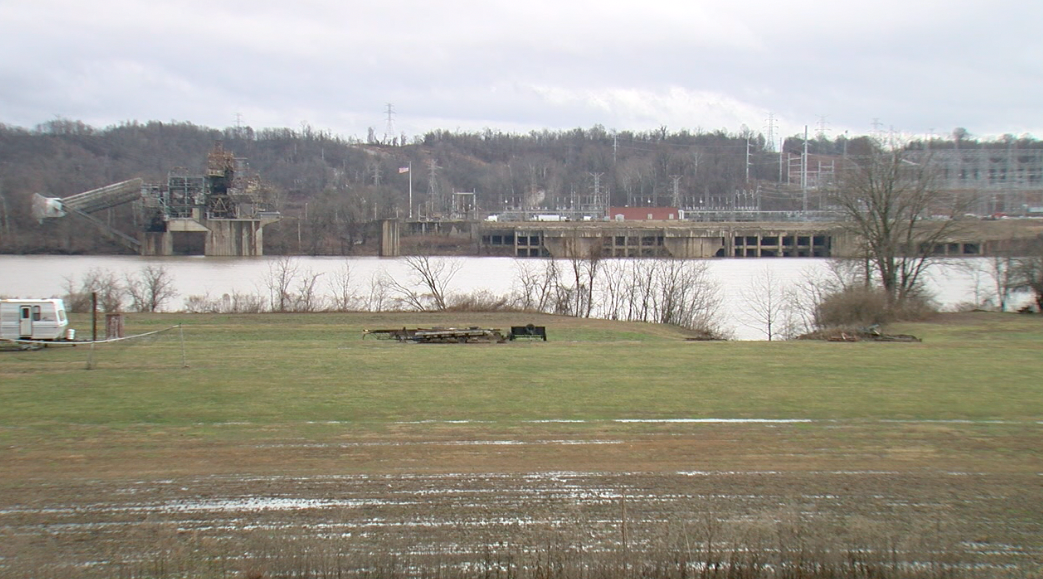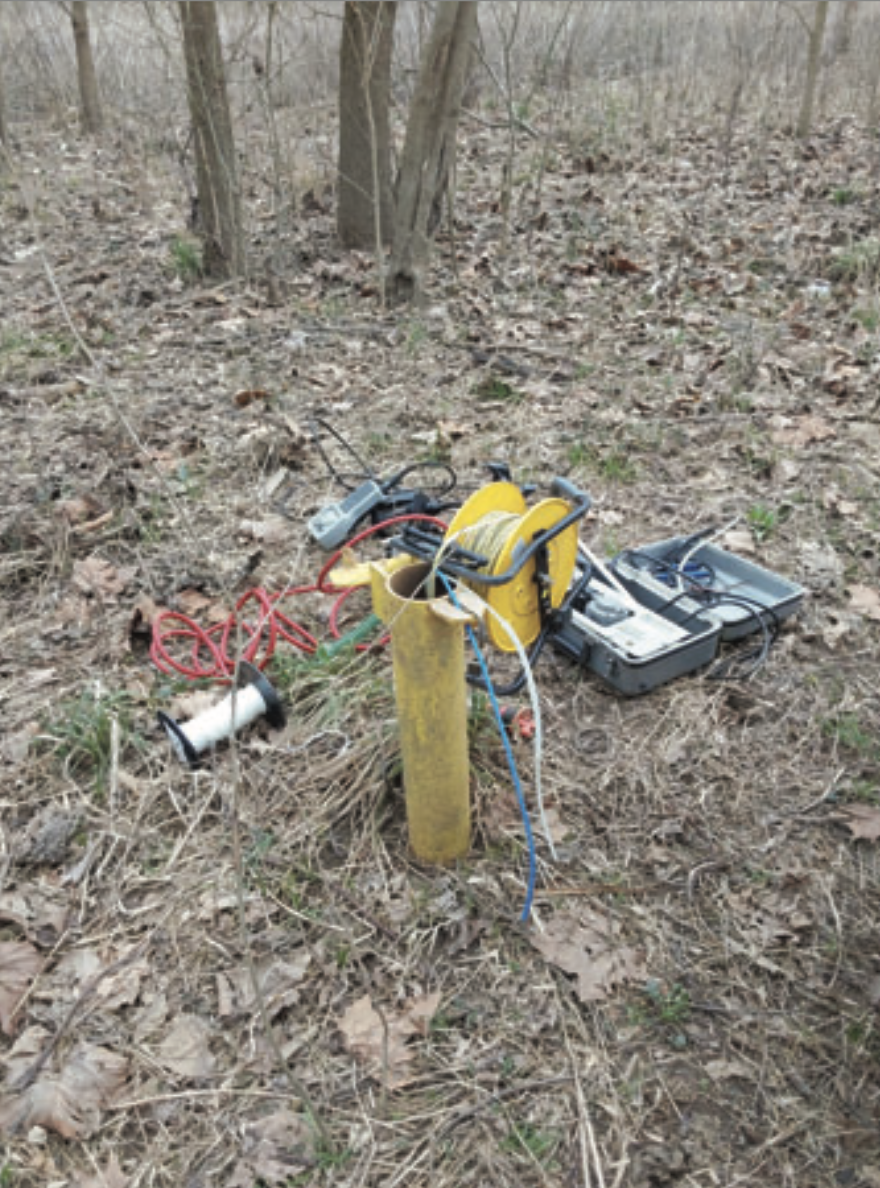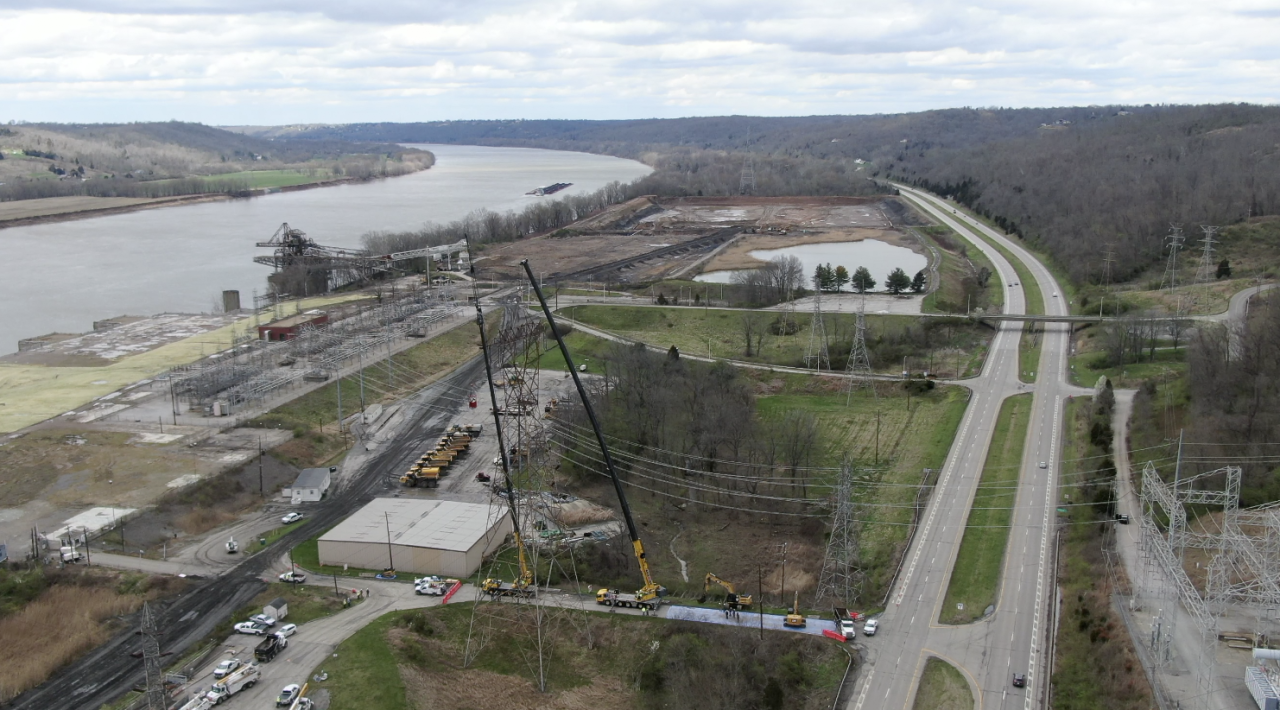PIERCE TOWNSHIP — Two wells that monitor groundwater for contamination at the former Beckjord coal plant were either missing or damaged for several months in 2022. But Clermont County officials never knew about it.
“If you lose some of those wells, then you lose some of the information it’s gathering,” said attorney Scott Doran, who represents the county on environmental issues. “The county is very concerned.”
Beckjord owner Commercial Liability Partners sent a letter to the Ohio EPA last September, notifying the agency that one groundwater monitoring well near the Ohio River had washed away during a summer flood, along with the riverbank.
A second monitoring well and a piezometer, which measures water depth, also were severely damaged by unauthorized logging equipment.
County officials say they did not know about this letter, or the missing and damaged wells, until WCPO contacted them last week. And they did not know if the wells had been replaced.
“The county should have been the first told about this by CLP, second by the Ohio EPA for sure,” said environmental attorney Dave Altman. “The Ohio EPA apparently knows about this … and didn’t tell anybody.”
A bigger concern to both Doran and Altman, is that flooding caused so much damage to the Beckjord site.
That’s because six million cubic yards of leftover coal fly ash are stored in manmade ponds along the Ohio River, which is a drinking water source for more than 5 million people.
These unlined ash ponds are in the river’s floodplain and directly upstream from Clermont County’s primary drinking water wellfields, which serve 130,000 people.
“If this can happen to a well, how in the world are we going to keep fly ash from getting into the environment, into the river and into the groundwater,” Altman said. “It’s a piece of evidence that the river gets so high and carves so deeply, that it can actually rip out and destroy a monitoring system that has been there for years.”
Coal fly ash is a by-product of burning coal, which contains contaminants such as mercury and arsenic, the U.S. EPA states on its website.

Built in the 1950s as a coal-burning giant, the Beckjord plant pumped electricity to hundreds of thousands of homes and businesses across Southwest Ohio.
Duke Energy closed Beckjord in 2014 and sold the 1400-acre site to CLP four years later. CLP is demolishing the plant, remediating the site, and hoping to attract new development after the cleanup is finished in late 2023, according to CLP’s website.
But the cleanup has not always gone smoothly.
Altman sued CLP in 2019 and again in 2022 on behalf of 100 residents. He says the developer breached a 1986 agreement with then Beckjord owner Cincinnati Gas and Electric that allegedly entitles residents to more information about contaminated waste disposal. And that no agency is actively regulating coal ash at the Beckjord site.
Coal ash exposure causes higher risk of cancer in the skin, liver, bladder, and lungs, as well as neurological and psychiatric effects, cardiovascular impacts, damage to blood vessels, and anemia. It also threatens plant and animal wildlife, causing elevated selenium levels in migratory birds, wetland vegetative damage, fish kills, fish and amphibian deformities, and plant toxicity, according to one lawsuit.

The W.C. Beckjord Station, a closed Duke Energy power plant located 20 miles east of Cincinnati, contains more than 10 billion pounds of toxins that are packed into ponds along the banks of the Ohio River.
Residents complained about brown dust clouds blowing from the ash ponds in the summer of 2020 to the Ohio EPA and Southwest Ohio Air Quality Agency, so thick that drivers couldn’t see the road or traffic lights.
Contractors blew up the main Beckjord smokestack in February 2021 as part of the demolition. Instead of falling on land as was permitted, it toppled into the Ohio River. The U.S. Army Corps of Engineers ordered CLP to clean up the mess and remove an estimated 75 cubic yards of demolition waste from the river, which the company did.
Prodding the EPA
Over the years Clermont leaders have frequently complained about the lack of information from CLP, and mediocre oversight from the Ohio EPA.
“We continue to prod the Ohio EPA … to do their job,” Doran said. “Personally, I would wish they were more aggressive.”
Clermont County Director of Utilities Lyle Bloom sent a letter to the U.S. EPA on Jan. 4, asking for more oversight of the coal ash that is stored in leaking, unlined ponds at Beckjord.
“One of Clermont County’s primary drinking water wellfields lies directly adjacent and down gradient from the coal ash impoundments,” Bloom wrote “Significant concentrations of sulfate in the groundwater (along with other contaminants) originating from the former Beckjord Power Station coal ash impoundments continue to threaten our well field and the environment.”

County leaders worry that coal ash is leaking into the groundwater. They want the ash removed from the man-made pits and taken to a sanitary lined landfill.
But that’s not what CLP is doing. The company and its subsidiary, New Richmond Development Corp., is relocating coal ash from the oldest pond on the site – Pond A – to another unlined pond on the south side of the property, Pond C.
Clermont officials also insisted that CLP install a new interceptor well to divert water contaminated by Pond A away from the county’s drinking water wells. Beckjord’s former owners put in a similar well in 1993, after high levels of sulfate were discovered in the Ohio River Valley Aquifer, where the county pulls drinking water.
For roughly 30 years the owners of Beckjord have tested groundwater four times a year and sent those monitoring reports to the county and the Ohio EPA. The site has more than 25 monitoring wells spread across the expansive area, testing for contaminants such as sulfate and boron.
County officials rely on those groundwater test results to track contaminants and measure if water levels are high enough to come into direct contact with coal ash residuals.
“All of these wells are monitoring the migrating (sulfate) plume,” said Altman, who criticized the network as inadequate. “Now part of it is gone so the integrity of the whole network, which should have been questioned to begin with, is now even more in question.”

A missing well
The Ohio EPA did not issue violations against CLP or its contractor, Gemini Engineering, after two groundwater wells went out of service last year.
“There were two malfunctioning wells out of a network of more than 25. These two monitoring wells were repaired, resulting in a delay of sampling for about two weeks. The wells are sampled quarterly, and the results have been consistent with the trends we have seen over the last 30 years,” Ohio EPA spokesperson James Lee wrote in an email response to WCPO’s questions.
But documents reveal that these same two wells had not been tested for at least four months, according to 2022 groundwater reports.
Gemini Engineering first took groundwater samples in March 2022, without any issues noted in its report.

When Gemini returned to Beckjord in June 2022, contractors could not find two groundwater monitoring wells, so they were never tested, according to the report.
“Two wells, MW-1 and MW-12 could not be located due to clearing and cutting efforts for logging work that had occurred in the area shortly before sampling, and therefore, were not able to be sampled,” according to the second quarter testing results.
When contractors returned the Beckjord site in late August for third quarter testing, they again could not find the same two wells.
“The first well, MW-1, was near the north-west corner of Pond A, along the Ohio River. During a flood even this summer, the riverbank and well were completely washed away. We have made several attempts to find the well and there is no trace of it,” wrote CLP environmental manager Linda Denison to the Ohio EPA on Sept. 2, 2022.
A second well, MW-12, and piezometer, which measures water depth, both had been severely damaged by unauthorized logging equipment operating in the area, Denton wrote.
“Envirocore has been hired to install the replacement wells starting Sept. 12, 2022,” Denton wrote.

But Lee, of the Ohio EPA, said contractors did not install new wells.
“The contractors were able to repair one well and the piezometer, and they found the missing well and determined it did not need to be repaired. Notices of violation were not issued since the contractor was able to quickly resolve the situation,” Lee wrote, noting that contractors tested the new wells in mid-September.
Altman wonders where the new wells were placed and who supervised the drilling.
“Who oversaw this? And why wouldn’t the county, who operates the wellfield, have known before anything was done about what was going to be done, where, and if it is adequate,” Altman said. “Wells don’t drill themselves. They have to be put in the right place.”
CLP did not respond to several requests for comment.
But Denison wrote in her letter to the Ohio EPA that the well closest to the Ohio River, MW-1, would have to be moved further inland to protect it from the Ohio River.
As of last Friday, the county and the Ohio EPA had not received results from ground water testing done at Beckjord in August and September.

'The tip of the iceberg'
The disappearance of the well closest to the Ohio River could highlight a bigger problem at Beckjord, Altman said: “That’s the tip of the iceberg.”
Doran agreed, noting that county officials are “disappointed,” about the lack of information from the Ohio EPA. Last week he sent an email to the U.S. EPA, asking the federal agency to respond to the situation.
“If river levels are close enough to impact that well – they are close enough to potentially impact the ash levies,” Doran said. “If the river got in there, it would scour it away very quickly and carry it downstream.”
Despite his concerns, Doran is confident that Clermont County’s drinking water is unpolluted.
“The drinking water is absolutely safe because it comes from Clermont County’s well field and it is extensively monitored and tested.”
His long-term concern is for the two interceptor wells that monitor the migration of the sulfate plume and keep drinking water safe. CLP must operate those interceptor wells as part of its closure permit, Doran said.
“Once the site is considered closed, that’s a different story,” Doran said. “It costs a fair amount of money to operate the well, at some point NRDC (New Richmond Development Corp.) may decide it’s done doing what’s required.”
Sulfate is the primary concern. While it’s not good for you, it can be treated and removed from drinking water, “but it’s expensive,” Doran said.





